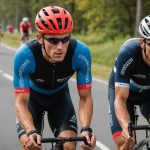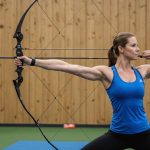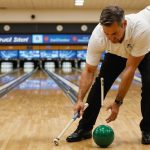Overview of Post-Competition Stress in Combat Sports
In the high-intensity world of combat sports, athletes often face significant post-competition stress that can affect both their mental well-being and physical recovery. Understanding this impact is crucial for effective combat sports recovery strategies. Post-competition stress is not just about the immediate aftermath of a match; it involves a complex interplay of emotional and physiological factors.
Common stressors for athletes, particularly in the UK, include the pressure to perform, the physical exertion involved, and the anticipation of future events. These stressors can lead to prolonged periods of anxiety and fatigue if not adequately managed.
Also to see : Ultimate guide to essential oils for muscle relaxation: a must-know resource for uk combat athletes
Addressing post-competition stress is essential for enhancing future performance and sustaining a healthy sports career. Effective stress management techniques can significantly improve an athlete’s recovery process, enabling them to return to training with renewed focus and energy. Ignoring these stress factors can lead to burnout, injuries, and a decline in performance.
Athletes are encouraged to incorporate stress management practices as part of their recovery routine. This can involve regular relaxation techniques, mindfulness practices, and physical recovery exercises. Through these methods, athletes can better manage their stress and improve their overall performance in and out of the sporting arena.
Also read : Unleashing your inner champion: the complete uk boxer”s handbook to speed bag mastery
Breathing Techniques for Relaxation
Incorporating effective breathing exercises is essential for enhancing combat sports recovery. These techniques are not only about reducing stress but also improving mental clarity.
Diaphragmatic Breathing
Diaphragmatic breathing, often referred to as deep breathing, aids in stress reduction by promoting full oxygen exchange. To practice:
- Sit or lie in a comfortable position.
- Place one hand on your chest and the other on your abdomen.
- Inhale deeply through the nose, allowing the diaphragm to expand (your abdomen should rise more than your chest).
- Exhale slowly through pursed lips, feeling your abdomen lower.
This technique eases tension and supports relaxation.
Box Breathing
Box breathing is a powerful method to calm nerves and focus the mind. It involves inhaling for four counts, holding the breath for four counts, exhaling for four counts, and pausing for four counts. This rhythmic technique can be seamlessly integrated into an athlete’s routine to manage stress effectively.
4-7-8 Breathing Method
The 4-7-8 breathing method emphasizes a count-based approach: inhale for four seconds, hold for seven, and exhale for eight. This approach slows the heart rate, promoting relaxation, making it ideal post-competition. Its sedative effect is beneficial after intense sporting events, encouraging mental and physical recovery.
Mindfulness Practices to Enhance Recovery
Incorporating mindfulness into recovery routines can significantly enhance the overall recovery and performance of athletes. These practices aid in reducing stress and improving focus, making them essential for post-competition recovery.
Guided Visualization
Guided visualization offers athletes a mental escape, promoting clarity and concentration. It involves imagining a peaceful scene or a successful performance outcome. By engaging the imagination, athletes can reduce anxiety and increase motivation. Incorporating this practice into post-competition routines allows athletes to reset mentally, preparing them for future challenges.
Body Scan Meditation
Body scan meditation is a conducive technique for releasing tension and fostering relaxation. This practice involves mentally scanning the body from head to toe, acknowledging areas of stress and tension. By focusing awareness on different body parts, athletes can achieve a heightened state of relaxation and facilitate muscular recovery. Incorporating a body scan after a competition can be pivotal for easing physiological stress.
Mindfulness in Movement
Integrating mindfulness into physical activity encourages a conscious awareness of movement, presence, and breathing. This approach can be seamlessly included in workouts and recovery stretches, optimizing both mental and physical benefits. Examples suitable for combat sports include slow, deliberate stretches or a mindful cooldown routine, focusing on each movement’s intricacies.
Overview of Post-Competition Stress in Combat Sports
In the realm of combat sports, post-competition stress can significantly impact both mental and physical recovery. Understanding this impact is crucial for effective stress management and improving future performances.
Combat sports athletes in the UK often face common stressors such as the pressure to excel, intense physical exertion, and the anticipation of upcoming events. These stressors can lead to a prolonged state of anxiety and fatigue if not effectively managed. Addressing post-competition stress is essential for maintaining a healthy sports career and preventing negative effects such as burnout and injuries.
Effective athlete stress management involves incorporating strategies that promote relaxation and recovery. Techniques such as breathing exercises, mindfulness, and structured recovery routines help mitigate stress and enhance an athlete’s ability to bounce back after competitions. Regularly practising these methods ensures athletes return to their regimen with renewed energy and focus. In short, skilful management of post-competition stress provides athletes with the resilience required for sustained success in their sporting careers.
Ignoring stress management can diminish performance and well-being, highlighting the critical need for structured recovery protocols tailored to an athlete’s unique needs.
Physical Stretching Techniques
Physical stretching techniques are key components of effective combat sports recovery. They enhance flexibility, reduce muscle tension, and expedite recovery.
Static Stretching Post-Competition
Static stretching is essential for muscle recovery. It involves holding a stretch without movement for a set period, allowing muscles to relax and elongate. This promotes increased blood flow and eases tension. Focus areas often include the hamstrings, quadriceps, and shoulders. Executing these stretches post-training or competition supports overall athlete well-being.
Dynamic Stretching for Relaxation
Different from static, dynamic stretching involves active movements that improve range of motion and prepare muscles for physical activity. While commonly part of pre-competition routines, dynamic stretches can also aid in relaxation post-event by facilitating movement that calms the nervous system. Gradual leg swings, arm circles, and gentle yoga flows are examples. Integrating them helps maintain adaptability and reduces stress.
Yoga Techniques for Combat Sports Recovery
Yoga offers athletes a holistic way to recover. Poses like Child’s Pose, Downward-Facing Dog, and Pigeon Pose are particularly beneficial, fostering relaxation and promoting flexibility. Combining sequences tailored to athletes’ needs can optimise their recovery process. Practising yoga regularly enhances the body’s resilience and reduces injury risk, positioning it as a valuable tool in a comprehensive recovery strategy.
Expert Insights and Testimonials
Incorporating insights from reputable sports psychologists can significantly bolster the recovery strategies of combat athletes. Relaxation is often underscored as vital for reducing post-competition stress and improving both mental and physical recuperation. Techniques such as visualisation and structured breathing exercises are frequently recommended. Their efficacy lies in promoting mental tranquility and enhancing focus, thereby supporting overall athlete well-being.
Direct testimonials from UK combat sports athletes reveal varied personal experiences. Many report success with tailored strategies combining mindfulness and physical relaxation routines. For instance, some athletes highlight the effectiveness of combining yoga with structured breathing techniques post-competition to optimise recovery. These insights provide a relatable perspective on managing stressors.
Experts in physical therapy stress the importance of integrating flexibility and recovery exercises specific to the sport into an athlete’s routine. Customized plans ensure that individual needs are met, aiding muscle recovery and reducing injury risk. Recommendations often include a mix of dynamic and static stretching tailored to target common stress areas, such as the shoulders and lower back. Together, these expert insights and athlete experiences form a comprehensive approach to effectively managing recovery challenges in combat sports.
















